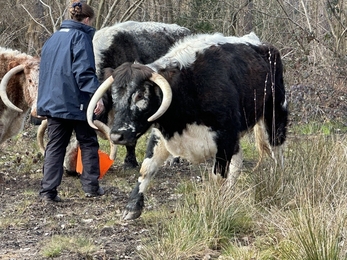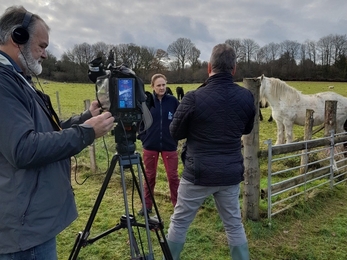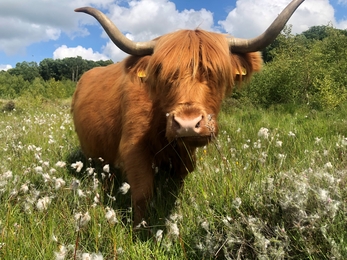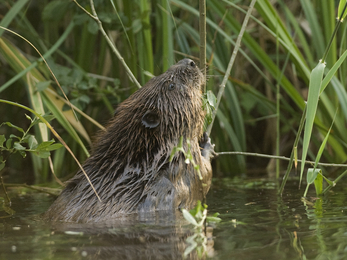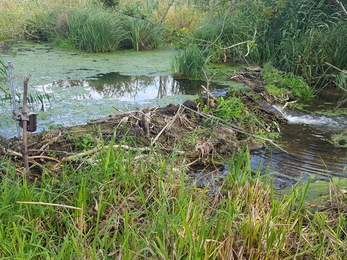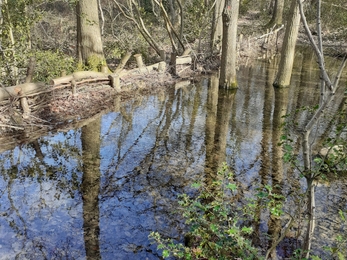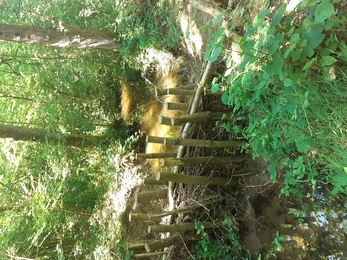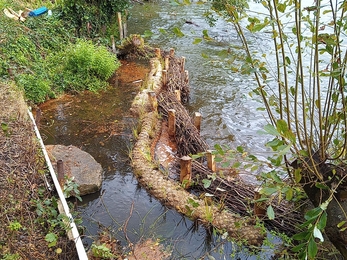Nature Heroes - Kent Wildlife Trust's Area Managers and Wardens
Ed Glenwright
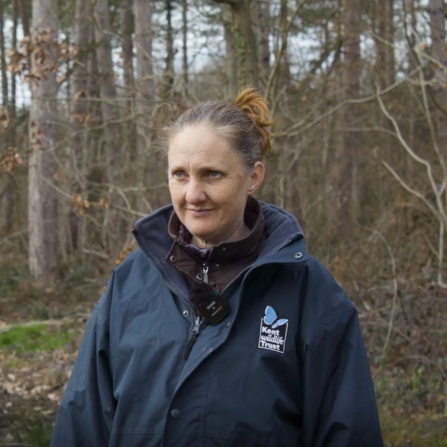
As part of my role at Kent Wildlife Trust, I am leading on the Wilder Grazing project. Where appropriate, we use grazing animals to replace lost mega herbivores to create balanced, dynamic change within ecosystems for the benefit of wildlife. Pig rootling creates space for disturbed ground specialist like poppies and skylarks, ditch wallowing by water buffalos boosts aquatic invertebrates, specialist sheep browsing rebalances scrub levels on abandoned grasslands for the benefit of specialist plants and butterflies, and cattle create mixed mosaics with woodlands for bird and fungi species.
This is certainly not the easy option, and certainly not when it’s such a comparatively new skill to implement, but the biodiversity and resource benefits are huge when you get it right.
Ian Rickards, Area Manager
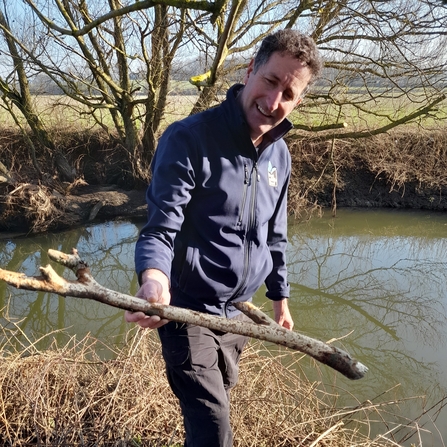
We are just completing the end of a two year Precious Peatlands project. This work has focused on Hothfield Heathlands, looking at ways of improving the quality of peatland across the site. Peat is one of the best natural carbon stores. Unlike trees, which eventually die and release their carbon, peat can store carbon indefinitely. The most important condition for maintaining healthy peat bogs is ensuring they stay wet. This is becoming increasingly difficult, especially in the South East of Kent.
We have been reducing the amount of trees and scrub, which are capable of sucking out huge volumes of water through transpiration – drying bogs out, and making it easier for even thirstier trees to grow. We have been blocking water channels and ditches to reduce run off and keep water on the site as much as possible.
Into the future, we will continue to manage these peatland sites using our grazing animals. They will prevent the scrub from re-establishing, whilst at the same time creating the niches and habitats that the species associated with peat need.
Steve Weeks, Area Manager
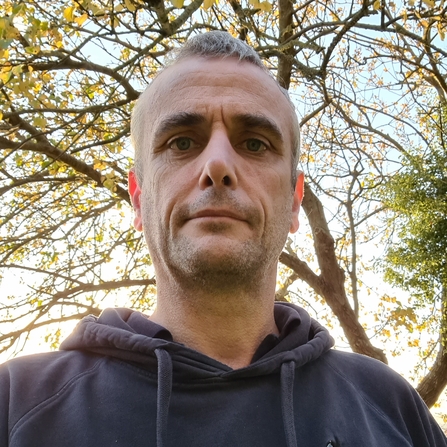
Ham Fen is well known as the first reserve in the country to use beavers to manage and enhance this important wetland. Now that the project has been running for over 20 years we can really appreciate the impact beavers are having on restoring and enhance Kent’s largest remaining fen. As highly skilled natural water engineers, they have ensured Ham Fen is more resilient to extreme weather events such as droughts and flooding. The extensive network of channels they have created not only helps to retain water during periods of long, dry weather but it also means during prolonged heavy rain it slows and spreads water over a far larger area, reducing the risk of flooding downstream.
Matt Hayes, Area Manager
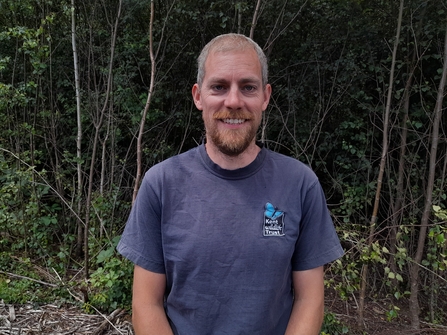
Across our Blean reserves, we have been working to manage water within the reserves. The Rewetting the Blean project, in partnership with RSPB and Canterbury City Council, carried out a number of interventions across the landscape aimed at slowing the flow of water from the land.
“Leaky dams” were created in small channels and streams which hold back water on site, helping to prevent peak flows and flooding downstream, as well as improving water quality reducing run off and loss of soils. These often simple structures can have dramatic affects, holding back substantial amounts of water. Historically, woodlands in the Blean have been altered with additional ditches created and channels straightened to get water away from places as fast as possible. This was originally done to promote timber production but has created a situation where our woodland soils can dry out for long periods of the summer. This makes them more vulnerable to run off from flash flood events during summer storms, as well as baking the ground hard, making it harder for wildlife such as birds to get access to food in the soil, such as worms. Holding back water for longer allows water more time to soak into the soil. There are added wildlife benefits in that small pools and wet patches are important for sometimes overlooked species such as midges and other flying insects, which are vital food sources for birds and bats. These interventions have a cascading benefit up the food chain. The project also created larger structures which has maintained water at part of our South Blean reserve throughout the summer even in times of extreme heat and drought.
We will continue to have this approach in mind and continue working on leaky dam structures where suitable. Seeking to restore the natural relationship water would have had with these reserves before being heavily altered by the human interventions of the past.
Paul Glanfield, Area Warden
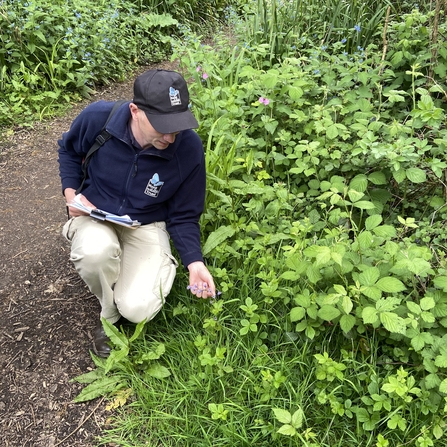
With climate change causing more severe weather events, it is becoming increasingly important to make our sites as resilient as possible to these fluctuations. In recent years we have experienced some of the hottest, wettest and windiest conditions on record. The works which have been carried out at Sevenoaks Wildlife Reserve and Polhill Bank aims to futuerproof these sites.
The East Lake at Sevenoaks Wildlife Reserve is a large open body of the water and the prevailing wind direction drives the water toward the northeastern edge of the lake. In high wind conditions there can be waves, if only small ones, crashing onto the shore. Being a former quarry site, the bank drops off steeply along this edge so there are no shallows to help dissipate the force of the waves.
In the past there has been an attempt to use hard engineering with metal pilings and large stones, and while this has prevented further damage to the bank, it gives an artificial look with very little wildlife potential. In the autumn of this year a soft engineering solution was trialled. Thanks to funding from the Darenth Vally Landscape Partnership Scheme, a team of specialist contractors have installed brashwood faggots and pre-planted coir rolls held in place by coir rope along the edge of the bank to create a baffle which will absorb some of the power from the incoming waves. This method also has the advantage that plants in the coir rolls provide much needed edge habitat for a range of species, and as the silt builds up behind the faggots, the hope is that more reeds, sedges and rushes will establish, creating a much more graded and wildlife friendly bankside.
On the hottest week this summer, an artificial pond was created on a former arable field at Polhill Bank. Again, specialist contractors were used to follow a plan for the pond which was designed to provide the best opportunity for it to fill naturally. Being on free draining chalk habitat, it was necessary to line the pond, but it was covered with top soil which was carefully removed first so it should naturalise quickly. The first of the rains came the week after the pond was completed, and although it didn’t rain heavily, the pond already begun to fill and was holding water well. The pond was created partly to add a wetland element to what is otherwise a very dry site, but also to provide a natural water source for the grazing livestock on the site so that they are less dependent of static water trough. The work also has the advantage of creating patches of disturbed ground on which a number of uncommon ruderal weeds which are found on the site will hopefully flourish.
Sevenoaks Wildlife Reserve is one of Kent Wildlife Trust's flagship sites and is a real hub for educational work and public events, and the Estates team does its best to support this in any way it can. This ranges from making sure that the pond and river dipping areas are safe and accessible for visiting groups, to providing seating logs and den building materials for the forest school sessions. It's very rewarding helping to inspire the next generation of budding naturalists.
